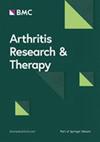Neutrophil extracellular traps and oxidative stress in systemic lupus erythematosus patients with and without renal involvement
IF 4.9
2区 医学
Q1 Medicine
引用次数: 0
Abstract
To investigate the levels of plasma neutrophil extracellular traps (NETs) and free thiols, the latter reflecting systemic oxidative stress (OS), and to explore the relationship between NETs and OS in quiescent systemic lupus erythematosus (SLE) patients with and without renal involvement. Plasma levels of NETs and free thiols were measured cross-sectionally in 100 SLE patients with low disease activity (SLEDAI < 5), of whom 73 patients had no renal involvement (non-LN) and 27 patients had lupus nephritis (LN). Additionally, 22 healthy controls (HCs) were included. NETs were measured using a myeloperoxidase-DNA complex ELISA and free thiols were measured using a thiol assay kit. NETs levels were significantly higher in both non-LN and LN patients compared to HCs (p < 0.001, p = 0.013), with no difference between the two patient groups (p = 0.799). Free thiol levels were not significantly different between groups. Interestingly, NETs were negatively correlated with free thiols in all 100 SLE patients (rho = -0.32) and non-LN patients (rho = -0.38), but not in LN patients. Levels of free thiols were significantly lower in subgroups of patients with estimated glomerular filtration rate (eGFR) < 60, serum creatinine (sCr) ≥ 90, C reactive protein (CRP) levels ≥ 5 and body mass index (BMI) ≥ 30. In multivariable regression, disease duration, NETs levels, and eGFR were independently associated with free thiol levels. Levels of NETs were increased in quiescent SLE patients. Although free thiol levels did not differ among the groups. The levels of NETs and free thiols were independently associated in SLE patients, suggesting a potential role of OS in NETs formation. Therefore, reducing OS might be an additional therapeutic target for SLE treatment.有或无肾脏受累的系统性红斑狼疮患者的中性粒细胞胞外陷阱和氧化应激
目的探讨静止性系统性红斑狼疮(SLE)患者血浆中性粒细胞胞外陷阱(NETs)和游离硫醇水平,后者反映系统性氧化应激(OS),并探讨NETs和OS之间的关系。对100例疾病活动性低(SLEDAI < 5)的SLE患者的血浆NETs和游离硫醇水平进行横断测量,其中73例患者无肾脏受累(非LN), 27例患者有狼疮肾炎(LN)。此外,还包括22名健康对照(hc)。net采用髓过氧化物酶- dna复合物ELISA法测定,游离硫醇采用硫醇测定试剂盒测定。与hcc患者相比,非LN和LN患者的NETs水平均显著升高(p < 0.001, p = 0.013),两组患者之间无差异(p = 0.799)。各组间游离硫醇含量无显著差异。有趣的是,在所有100名SLE患者(rho = -0.32)和非LN患者(rho = -0.38)中,NETs与游离硫醇呈负相关,但在LN患者中没有。在肾小球滤过率(eGFR) < 60、血清肌酐(sCr)≥90、C反应蛋白(CRP)水平≥5和体重指数(BMI)≥30的患者亚组中,游离硫醇水平显著降低。在多变量回归中,病程、NETs水平和eGFR与游离硫醇水平独立相关。静止SLE患者的NETs水平升高。尽管各组之间的游离硫醇含量没有差异。SLE患者的NETs和游离硫醇水平独立相关,提示OS在NETs形成中的潜在作用。因此,减少OS可能是SLE治疗的另一个治疗靶点。
本文章由计算机程序翻译,如有差异,请以英文原文为准。
求助全文
约1分钟内获得全文
求助全文
来源期刊

Arthritis Research & Therapy
RHEUMATOLOGY-
CiteScore
8.60
自引率
2.00%
发文量
261
审稿时长
14 weeks
期刊介绍:
Established in 1999, Arthritis Research and Therapy is an international, open access, peer-reviewed journal, publishing original articles in the area of musculoskeletal research and therapy as well as, reviews, commentaries and reports. A major focus of the journal is on the immunologic processes leading to inflammation, damage and repair as they relate to autoimmune rheumatic and musculoskeletal conditions, and which inform the translation of this knowledge into advances in clinical care. Original basic, translational and clinical research is considered for publication along with results of early and late phase therapeutic trials, especially as they pertain to the underpinning science that informs clinical observations in interventional studies.
 求助内容:
求助内容: 应助结果提醒方式:
应助结果提醒方式:


